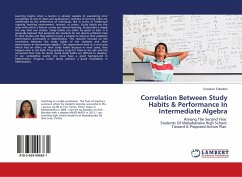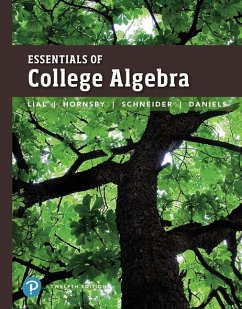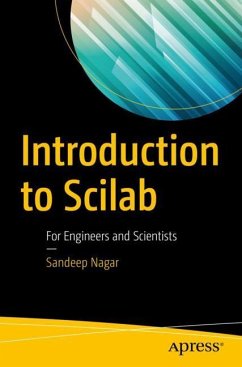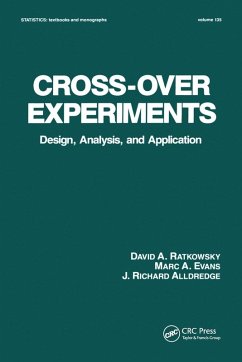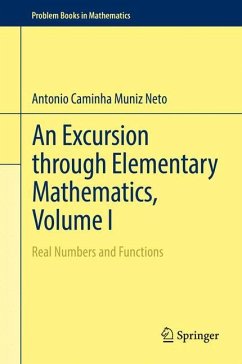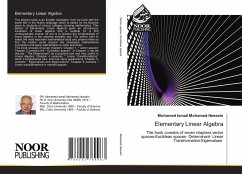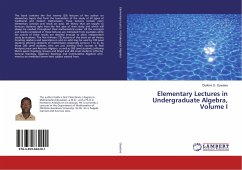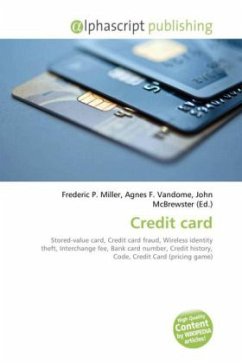Nicht lieferbar
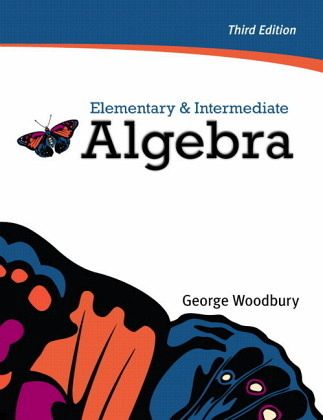
Elementary & Intermediate Algebra plus MyMathLab/MyStatLab, Access Card Package
Versandkostenfrei!
Liefertermin unbestimmt
160,99 €
inkl. MwSt.
For many students, developmental mathematics is the gateway to success in academics and in life. George Woodbury strives to provide his students (and yours!) with a complete learning package that empowers them to succeed in developmental mathematics and beyond. The Woodbury suite consists of a combined text written from the ground up to minimize overlap between elementary and intermediate algebra, a new workbook that helps students make connections between skills and concepts, and a robust MyMathLab" course.
Product Description
ALERT: Before you purchase, check with your instructor or review your course syllabus to ensure that you select the correct ISBN. Several versions of Pearson's MyLab & Mastering products exist for each title, including customized versions for individual schools, and registrations are not transferable. In addition, you may need a CourseID, provided by your instructor, to register for and use Pearson's MyLab & Mastering products.
Packages
Access codes for Pearson's MyLab & Mastering products may not be included when purchasing or renting from companies other than Pearson; check with the seller before completing your purchase.
Used or rental books
If you rent or purchase a used book with an access code, the access code may have been redeemed previously and you may have to purchase a new access code.
Access codes
Access codes that are purchased from sellers other than Pearson carry a higher risk of being either the wrong ISBN or a previously redeemed code. Check with the seller prior to purchase.
-- Developmental mathematics is the gateway to success in academics and in life. George Woodbury strives to provide his students with a complete learning package that empowers them for success in developmental mathematics and beyond. The Woodbury suite consists of a combined text written from the ground up to minimize overlap between elementary and intermediate algebra, a new workbook that helps students make connections between skills and concepts, and a robust set of MyMathLab resources.
Note: this item is for the textbook only; supplements are available separately.
Features + Benefits
The Textbook
Elementary and Intermediate Algebra was written from the ground-up as a combined text to help students move seamlessly from one course to the other and to eliminate much of the overlap between the two courses.
A Transition Chapter (Chapter 8) reviews and expands upon essential topics from elementary algebra, while introducing new topics that begin the intermediate algebra course.
Coverage of functions is integrated throughout the text to prepare students for college algebra; however, the material is written in such a way that instructors are able to cover functions later if preferred.
AStudy Strategy is introduced in each chapter opener and then expanded upon throughout the chapter in the Building Your Study Strategy boxes that appear before each exercise set. By reinforcing good study habits, these strategies will equip students for success as they progress through the textbook.
Quick Check Exercises, paired with each example, allow students to practice what they are learning as they read through each section. The answers to these exercises are provided in the back of the book so students can check their understanding.
Quality exercises provide the diverse practice students need to succeed. Exercise types include the following:
Vocabulary Exercises begin each section's exercises and check understanding of the basic vocabulary presented in the preceding section.
Mixed Practice Problems provide an opportunity to practice multiple types of problems in one setting. With these exercises, students first need to determine the correct method used to solve a problem, which reduces their tendency to simply memorize steps to solve the problems for each objective. These are provided as appropriate throughout the book.
Writing in Mathematics Exercises ask students to explain their answers in written form, an important skill that often leads to a higher level of understanding, as acknowledged by AMATYC Standards. Additionally, students can practice their writing skills through Solutions Manual Exercises and Newsletter Exercises, which appear in relevant spots throughout the text.
Quick Review Exercises appear once in each chapter to maintain skills and prepare for the upcoming concepts.
Comprehensive end-of-chapter material serves as an excellent resource for extra practice and test preparation. Every chapter concludes with a newly expanded Chapter Summary, a summary of the chapter'sStudy Strategies, Chapter Review Exercises, and a Chapter Test. Full solutions for highlighted chapter review exercises are provided in the back of the text as yet another way for students to assess their understanding and check their work in preparation for the classroom exam.
Cumulative Review exercises can be found after Chapters 4, 7, 11, and 14.These exercises are strategically placed to help students review for midterm and final exams.
Mathematicians in History activities provide an opportunity to learn about the rich and diverse history of mathematics. These short research projects ask students to investigate the life of a prominent mathematician and can be assigned as independent work or as collaborative learning activities. Questions are provided for each activity.
The Workbook
NEW! The Guide to Skills and Concepts, specifically designed for the Woodbury series, includes additional exercises and resources for every section of the text to help students make the transition from acquiring skills to learning concepts. This workbook can be packaged with the textbook or the MyMathLab access code, and includes the following materials for each section of the text:
Learning objectives
Vocabulary terms with fill-in-the-blank exercises
Reading Ahead writing exercises
Warm-up exercises
Guided examples
Extra practice exercises
MyMathLab Resources
George Woodbury's Guide to MyMathLab provides instructors with helpful ways to make the most of their MyMathLab experience. New and experienced users alike will benefit from George Woodbury's tips for implementing the many useful features available in MyMathLab. The guide includes the following resources and more:
MyMathLab course outlines designed to suit a variety of learning environments.
Course IDs formodel courses, created by George Woodbury, that instructors can copy into their own MyMathLab accounts.
The MyMathLab courses also contain a wealth of resources for instructors and students:
Increased exercise coverage gives instructors more homework options than ever before.
Premade homework assignments, created by George Woodbury, are now available within the homework manager.
An array of video resources including lectures for each section of the text, chapter test prep videos for all chapter test exercises, and concept videos are also available.
An Interactive English/Spanish glossary offers definitions of important mathematical terms in both English and Spanish.
1. Review of Real Numbers
1.1. Integers, Opposites, and Absolute Values
1.2. Operations with Integers
1.3. Fractions
1.4. Operations with Fractions
1.5. Decimals and Percents
1.6. Basic Statistics
1.7. Exponents and Order of Operations
1.8 Introduction to Algebra
2. Linear Equations
2.1. Introduction to Linear Equations
2.2. Solving Linear Equations: A General Strategy
2.3. Problem Solving; Applications of Linear Equations
2.4. Applications Involving Percentages; Ration and Proportion
2.5. Linear Inequalities
3. Graphing Linear Equations
3.1. The Rectangular Coordinate System; Equations in Two Variables
3.2. Graphing Linear Equations and Their Intercepts
3.3. Slope of a Line
3.4. Linear Functions
3.5. Parallel and Perpendicular Lines
3.6. Equations of Lines
3.7. Linear Inequalities
4. Systems of Equations
4.1. Systems of Linear Equations; Solving Systems by Graphing
4.2. Solving Systems of Equations by Using the Substitution Method
4.3. Solving Systems of Equations by Using the Addition Method
4.4. Applications of Systems of Equations
4.5. Systems of Linear Inequalities
5. Exponents and Polynomials
5.1. Exponents
5.2. Negative Exponents; Scientific Notation
5.3. Polynomials; Addition and Subtraction of Polynomials
5.4. Multiplying Polynomials
5.5. Dividing of Polynomials
6. Factoring and Quadratic Equations
6.1. An Introduction to Factoring; the Greatest Common Factor; Factoring by Grouping
6.2. Factoring Trinomials of the Form x2 + bx + c
6.3. Factoring Trinomials of the Form ax2 + bx + c, where a ≠ 1
6.4. Factoring Special Binomials
6.5. Factoring Polynomials: A General Strategy
6.6. Solving Quadratic Equations by Factoring
6.7. Quadratic Functions
6.8. Applications of Quadratic Equations and Quadratic Functions
7. Rational Expressions and Equations
7.1. Rational Expressions and Functions
7.2. Multiplication and Division of Rational Expressions
7.3. Addition and Subtraction of Rational Expressions That Have the Same Denominator
7.4. Addition and Subtraction of Rational Expressions That Have Different Denominators
7.5. Complex Fractions
7.6. Rational Equations
7.7. Applications of Rational Equations
8. A Transition
8.1. Linear Equations and Absolute Value Equations
8.2. Linear Inequalities and Absolute Value Inequalities
8.3. Graphing Linear Equations and Functions; Graphing Absolute Value Functions
8.4. Review of Factoring; Quadratic Equations and Rational Equations
8.5. Systems of Equations (Two Equations in Two Unknowns, Three Equations in Three Unknowns)
9. Radical Expressions and Equations
9.1. Square Roots; Radical Notation
9.2. Rational Exponents
9.3. Simplifying, Adding, and Subtracting Radical Expressions
9.4. Multiplying and Dividing Radical Expressions
9.5. Radical Equations and Applications of Radical Equations
9.6. The Complex Numbers
10. Quadratic Equations
10.1. Solving Quadratic Equations by Extracting Square Roots; Completing the Square
10.2. The Quadratic Formula
10.3. Equations That Are Quadratic in Form
10.4. Graphing Quadratic Equations
10.5. Applications Using Quadratic Equations
10.6. Quadratic and Rational Inequalities
11. Functions
11.1. Review of Functions
11.2. Linear Functions
11.3. Quadratic Functions
11.4. Other Functions and Their Graphs
11.5. The Algebra of Functions
11.6. Inverse Functions
12. Logarithmic and Exponential Functions
12.1. Exponential Functions
12.2. Logarithmic Functions
12.3. Properties of Logarithms
12.4. Exponential and Logarithmic Equations
12.5. Applications of Exponential and Logarithmic Functions
12.6. Graphing Exponential and Logarithmic Functions
13. Conic Sections
13.1. Parabolas
13.2. Circles
13.3. Ellipses
13.4. Hyperbolas
13.5. Nonlinear Systems of Equations
14. Sequences, Series, and the Binomial Theorem
14.1. Sequences and Series
14.2. Arithmetic Sequences and Series
14.3. Geometric Sequences and Series
14.4. The Binomial Theorem
Appendices
A-1. Synthetic Division
A-2. Using Matrices to Solve Systems of Equations
Product Description
ALERT: Before you purchase, check with your instructor or review your course syllabus to ensure that you select the correct ISBN. Several versions of Pearson's MyLab & Mastering products exist for each title, including customized versions for individual schools, and registrations are not transferable. In addition, you may need a CourseID, provided by your instructor, to register for and use Pearson's MyLab & Mastering products.
Packages
Access codes for Pearson's MyLab & Mastering products may not be included when purchasing or renting from companies other than Pearson; check with the seller before completing your purchase.
Used or rental books
If you rent or purchase a used book with an access code, the access code may have been redeemed previously and you may have to purchase a new access code.
Access codes
Access codes that are purchased from sellers other than Pearson carry a higher risk of being either the wrong ISBN or a previously redeemed code. Check with the seller prior to purchase.
-- Developmental mathematics is the gateway to success in academics and in life. George Woodbury strives to provide his students with a complete learning package that empowers them for success in developmental mathematics and beyond. The Woodbury suite consists of a combined text written from the ground up to minimize overlap between elementary and intermediate algebra, a new workbook that helps students make connections between skills and concepts, and a robust set of MyMathLab resources.
Note: this item is for the textbook only; supplements are available separately.
Features + Benefits
The Textbook
Elementary and Intermediate Algebra was written from the ground-up as a combined text to help students move seamlessly from one course to the other and to eliminate much of the overlap between the two courses.
A Transition Chapter (Chapter 8) reviews and expands upon essential topics from elementary algebra, while introducing new topics that begin the intermediate algebra course.
Coverage of functions is integrated throughout the text to prepare students for college algebra; however, the material is written in such a way that instructors are able to cover functions later if preferred.
AStudy Strategy is introduced in each chapter opener and then expanded upon throughout the chapter in the Building Your Study Strategy boxes that appear before each exercise set. By reinforcing good study habits, these strategies will equip students for success as they progress through the textbook.
Quick Check Exercises, paired with each example, allow students to practice what they are learning as they read through each section. The answers to these exercises are provided in the back of the book so students can check their understanding.
Quality exercises provide the diverse practice students need to succeed. Exercise types include the following:
Vocabulary Exercises begin each section's exercises and check understanding of the basic vocabulary presented in the preceding section.
Mixed Practice Problems provide an opportunity to practice multiple types of problems in one setting. With these exercises, students first need to determine the correct method used to solve a problem, which reduces their tendency to simply memorize steps to solve the problems for each objective. These are provided as appropriate throughout the book.
Writing in Mathematics Exercises ask students to explain their answers in written form, an important skill that often leads to a higher level of understanding, as acknowledged by AMATYC Standards. Additionally, students can practice their writing skills through Solutions Manual Exercises and Newsletter Exercises, which appear in relevant spots throughout the text.
Quick Review Exercises appear once in each chapter to maintain skills and prepare for the upcoming concepts.
Comprehensive end-of-chapter material serves as an excellent resource for extra practice and test preparation. Every chapter concludes with a newly expanded Chapter Summary, a summary of the chapter'sStudy Strategies, Chapter Review Exercises, and a Chapter Test. Full solutions for highlighted chapter review exercises are provided in the back of the text as yet another way for students to assess their understanding and check their work in preparation for the classroom exam.
Cumulative Review exercises can be found after Chapters 4, 7, 11, and 14.These exercises are strategically placed to help students review for midterm and final exams.
Mathematicians in History activities provide an opportunity to learn about the rich and diverse history of mathematics. These short research projects ask students to investigate the life of a prominent mathematician and can be assigned as independent work or as collaborative learning activities. Questions are provided for each activity.
The Workbook
NEW! The Guide to Skills and Concepts, specifically designed for the Woodbury series, includes additional exercises and resources for every section of the text to help students make the transition from acquiring skills to learning concepts. This workbook can be packaged with the textbook or the MyMathLab access code, and includes the following materials for each section of the text:
Learning objectives
Vocabulary terms with fill-in-the-blank exercises
Reading Ahead writing exercises
Warm-up exercises
Guided examples
Extra practice exercises
MyMathLab Resources
George Woodbury's Guide to MyMathLab provides instructors with helpful ways to make the most of their MyMathLab experience. New and experienced users alike will benefit from George Woodbury's tips for implementing the many useful features available in MyMathLab. The guide includes the following resources and more:
MyMathLab course outlines designed to suit a variety of learning environments.
Course IDs formodel courses, created by George Woodbury, that instructors can copy into their own MyMathLab accounts.
The MyMathLab courses also contain a wealth of resources for instructors and students:
Increased exercise coverage gives instructors more homework options than ever before.
Premade homework assignments, created by George Woodbury, are now available within the homework manager.
An array of video resources including lectures for each section of the text, chapter test prep videos for all chapter test exercises, and concept videos are also available.
An Interactive English/Spanish glossary offers definitions of important mathematical terms in both English and Spanish.
1. Review of Real Numbers
1.1. Integers, Opposites, and Absolute Values
1.2. Operations with Integers
1.3. Fractions
1.4. Operations with Fractions
1.5. Decimals and Percents
1.6. Basic Statistics
1.7. Exponents and Order of Operations
1.8 Introduction to Algebra
2. Linear Equations
2.1. Introduction to Linear Equations
2.2. Solving Linear Equations: A General Strategy
2.3. Problem Solving; Applications of Linear Equations
2.4. Applications Involving Percentages; Ration and Proportion
2.5. Linear Inequalities
3. Graphing Linear Equations
3.1. The Rectangular Coordinate System; Equations in Two Variables
3.2. Graphing Linear Equations and Their Intercepts
3.3. Slope of a Line
3.4. Linear Functions
3.5. Parallel and Perpendicular Lines
3.6. Equations of Lines
3.7. Linear Inequalities
4. Systems of Equations
4.1. Systems of Linear Equations; Solving Systems by Graphing
4.2. Solving Systems of Equations by Using the Substitution Method
4.3. Solving Systems of Equations by Using the Addition Method
4.4. Applications of Systems of Equations
4.5. Systems of Linear Inequalities
5. Exponents and Polynomials
5.1. Exponents
5.2. Negative Exponents; Scientific Notation
5.3. Polynomials; Addition and Subtraction of Polynomials
5.4. Multiplying Polynomials
5.5. Dividing of Polynomials
6. Factoring and Quadratic Equations
6.1. An Introduction to Factoring; the Greatest Common Factor; Factoring by Grouping
6.2. Factoring Trinomials of the Form x2 + bx + c
6.3. Factoring Trinomials of the Form ax2 + bx + c, where a ≠ 1
6.4. Factoring Special Binomials
6.5. Factoring Polynomials: A General Strategy
6.6. Solving Quadratic Equations by Factoring
6.7. Quadratic Functions
6.8. Applications of Quadratic Equations and Quadratic Functions
7. Rational Expressions and Equations
7.1. Rational Expressions and Functions
7.2. Multiplication and Division of Rational Expressions
7.3. Addition and Subtraction of Rational Expressions That Have the Same Denominator
7.4. Addition and Subtraction of Rational Expressions That Have Different Denominators
7.5. Complex Fractions
7.6. Rational Equations
7.7. Applications of Rational Equations
8. A Transition
8.1. Linear Equations and Absolute Value Equations
8.2. Linear Inequalities and Absolute Value Inequalities
8.3. Graphing Linear Equations and Functions; Graphing Absolute Value Functions
8.4. Review of Factoring; Quadratic Equations and Rational Equations
8.5. Systems of Equations (Two Equations in Two Unknowns, Three Equations in Three Unknowns)
9. Radical Expressions and Equations
9.1. Square Roots; Radical Notation
9.2. Rational Exponents
9.3. Simplifying, Adding, and Subtracting Radical Expressions
9.4. Multiplying and Dividing Radical Expressions
9.5. Radical Equations and Applications of Radical Equations
9.6. The Complex Numbers
10. Quadratic Equations
10.1. Solving Quadratic Equations by Extracting Square Roots; Completing the Square
10.2. The Quadratic Formula
10.3. Equations That Are Quadratic in Form
10.4. Graphing Quadratic Equations
10.5. Applications Using Quadratic Equations
10.6. Quadratic and Rational Inequalities
11. Functions
11.1. Review of Functions
11.2. Linear Functions
11.3. Quadratic Functions
11.4. Other Functions and Their Graphs
11.5. The Algebra of Functions
11.6. Inverse Functions
12. Logarithmic and Exponential Functions
12.1. Exponential Functions
12.2. Logarithmic Functions
12.3. Properties of Logarithms
12.4. Exponential and Logarithmic Equations
12.5. Applications of Exponential and Logarithmic Functions
12.6. Graphing Exponential and Logarithmic Functions
13. Conic Sections
13.1. Parabolas
13.2. Circles
13.3. Ellipses
13.4. Hyperbolas
13.5. Nonlinear Systems of Equations
14. Sequences, Series, and the Binomial Theorem
14.1. Sequences and Series
14.2. Arithmetic Sequences and Series
14.3. Geometric Sequences and Series
14.4. The Binomial Theorem
Appendices
A-1. Synthetic Division
A-2. Using Matrices to Solve Systems of Equations
For many students, developmental mathematics is the gateway to success in academics and in life. George Woodbury strives to provide his students (and yours!) with a complete learning package that empowers them to succeed in developmental mathematics and beyond. The Woodbury suite consists of a combined text written from the ground up to minimize overlap between elementary and intermediate algebra, a new workbook that helps students make connections between skills and concepts, and a robust MyMathLab® course.
Bei diesem Produkt handelt es sich um ein Bundle, bestehend aus einem Buch und einem digitalen Mehrwert.
Deshalb wird dieses Produkt auf der Rechnung mit 19% MwSt ausgewiesen.




